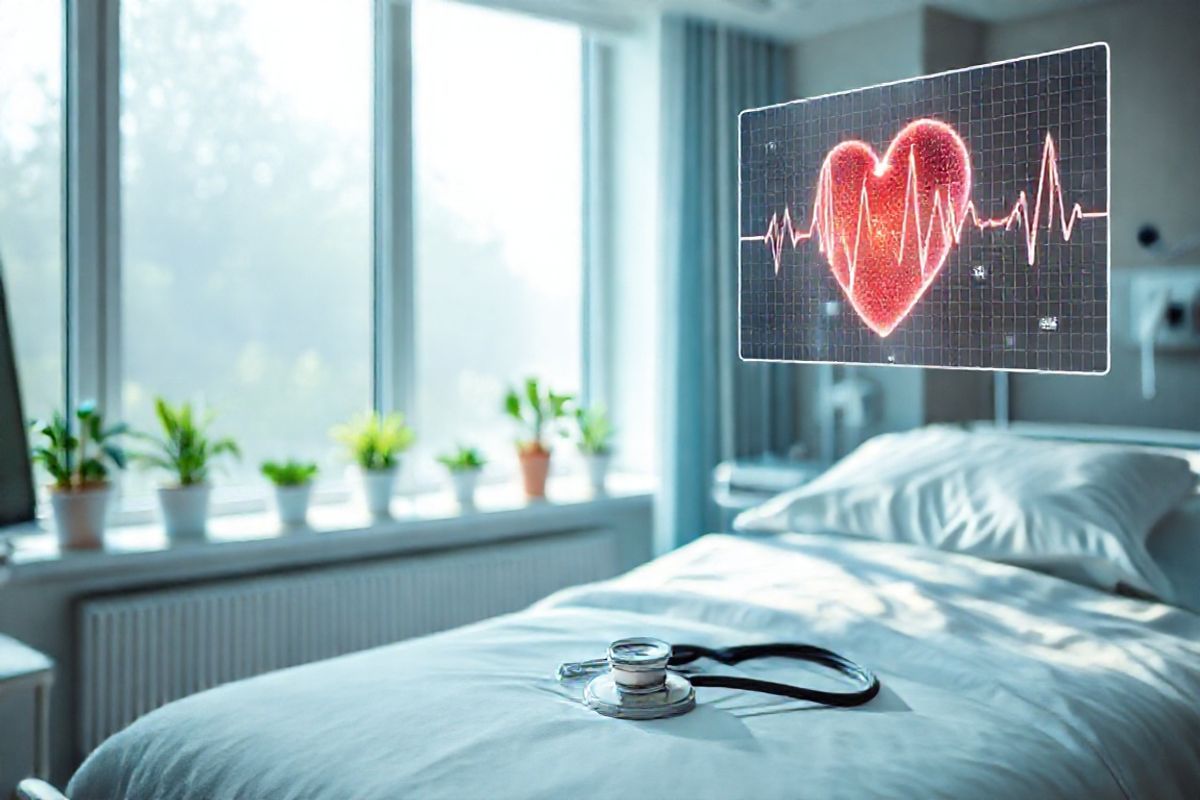Table of Contents
What is Atrial tachycardia? Unpacking the Basics of This Common Heart arrhythmia

atrial tachycardia is a specific type of arrhythmia characterized by an irregular heart rhythm where the upper chambers of the heart, known as the atria, beat faster than normal. Typically, during an atrial tachycardia episode, the heart rate can range from 100 to 250 beats per minute. This condition falls under the broader category of supraventricular tachycardia (SVT), which refers to rapid heartbeats originating from above the ventricles, primarily in the atria (Cleveland Clinic, 2023).
Atrial tachycardia is often triggered by faulty electrical signals that cause the heart to beat too quickly. These signals may originate from abnormal electrical pathways or areas of the heart, leading to a rapid and irregular heartbeat. Despite its alarming symptoms, atrial tachycardia is typically not life-threatening and can often be managed effectively with appropriate treatment strategies (UCSF Health, 2023).
Recognizing the Symptoms: How to Identify Atrial Tachycardia and Its Impact on Your Health

Identifying atrial tachycardia involves recognizing its myriad symptoms, which can vary significantly from person to person. The most common symptom is a noticeably rapid heartbeat, often described as palpitations, fluttering, or pounding sensations in the chest. Other symptoms may include:
- Dizziness or lightheadedness: This can occur due to insufficient blood flow to the brain.
- Chest pain or discomfort: Some individuals may experience a feeling of tightness or pain in the chest.
- Shortness of breath: Difficulty breathing, especially during physical activity, is common.
- Fainting or near-fainting episodes: These can result from a significant drop in blood pressure.
- Fatigue: A general sense of tiredness may also accompany episodes of rapid heartbeats (Mayo Clinic, 2023).
It’s important to note that some individuals may not experience any symptoms at all, particularly in cases of paroxysmal atrial tachycardia, where episodes come and go without warning. However, persistent symptoms warrant a thorough medical evaluation to rule out more serious conditions that may mimic atrial tachycardia (Hopkins Medicine, 2023).
Exploring the Causes: What Triggers Atrial Tachycardia and Other Heart arrhythmias?
Several factors can trigger atrial tachycardia, including:
- Electrical Pathway Abnormalities: Faulty electrical signals can originate from areas in the atria instead of the sinus node, leading to rapid heart rates.
- Heart Conditions: Underlying heart diseases, such as coronary artery disease or heart valve disease, can increase the risk of developing atrial tachycardia.
- Stimulants: Excessive consumption of caffeine, alcohol, or recreational drugs can provoke episodes.
- Hormonal Changes: Conditions such as hyperthyroidism can lead to increased heart rates and arrhythmias.
- Pulmonary Issues: Lung diseases like chronic obstructive pulmonary disease (COPD) may also contribute to the onset of atrial tachycardia (Cleveland Clinic, 2023; UCSF Health, 2023).
Understanding these triggers is crucial for managing atrial tachycardia effectively. Avoiding known triggers and managing underlying health conditions can significantly reduce the frequency and severity of episodes.
Effective Treatments Available: Managing Atrial Tachycardia and Restoring Heart Rhythm
Treatment options for atrial tachycardia largely depend on the severity of the condition and the presence of underlying heart disease. Common treatment strategies include:
Medications
- Beta-Blockers: These medications help reduce heart rate and control symptoms by blocking the effects of adrenaline on the heart (Mayo Clinic, 2023).
- Calcium Channel Blockers: These drugs can help relax the heart muscles and slow the heart rate.
- Antiarrhythmic Medications: Specific medications like flecainide, propafenone, or amiodarone may be prescribed to help restore normal heart rhythm (UCSF Health, 2023).
Catheter Ablation
Catheter ablation is a minimally invasive procedure where a catheter is inserted into a major blood vessel and guided to the heart. It aims to destroy the small areas of heart tissue that are causing the abnormal electrical signals. This procedure has shown a high success rate, particularly for focal atrial tachycardia (Cleveland Clinic, 2023; Hopkins Medicine, 2023).
Electrical Cardioversion
This procedure involves delivering a controlled electric shock to the heart to reset its rhythm. It’s typically used in cases where rapid heartbeats result in significant symptoms or complications (UCSF Health, 2023).
Implantable Devices
In some cases, patients may require devices like pacemakers, which help maintain a normal heart rhythm, especially in patients with bradycardia or recurrent episodes of atrial tachycardia that do not respond to medications (Mayo Clinic, 2023).
Living with Atrial Tachycardia: Tips for Coping and Maintaining Heart Health
Living with atrial tachycardia involves adopting lifestyle changes to manage symptoms and promote overall heart health. Here are some practical tips:
- Avoid Known Triggers: Limit intake of caffeine, alcohol, and recreational drugs that can provoke tachycardia.
- Engage in Regular Exercise: Moderate exercise can strengthen the heart and improve overall cardiovascular health. However, individuals should consult their healthcare provider before starting any new exercise regimen.
- Manage Stress: Techniques such as yoga, meditation, and deep-breathing exercises can help reduce stress levels, which may trigger episodes of atrial tachycardia.
- Monitor Your Symptoms: Keeping a diary of episodes can help identify triggers and patterns, providing valuable information for healthcare providers.
- Regular Check-ups: Maintaining regular appointments with a healthcare provider is essential for monitoring heart health and adjusting treatment plans as necessary (Mayo Clinic, 2023; UCSF Health, 2023).
FAQ
What is the difference between atrial tachycardia and atrial fibrillation?
Atrial tachycardia is characterized by a rapid heart rate originating from the atria, while atrial fibrillation involves erratic electrical signals leading to an irregular heart rhythm. Both conditions can cause palpitations and other symptoms but require different management strategies.
Can atrial tachycardia be cured?
Yes, many patients can achieve significant improvements or even cures through lifestyle changes, medication, and procedures like catheter ablation, especially in cases where underlying conditions are addressed (Cleveland Clinic, 2023).
Is atrial tachycardia life-threatening?
While atrial tachycardia itself is often not life-threatening, it can lead to complications, especially in individuals with pre-existing heart conditions. Prompt medical attention is essential if symptoms worsen or new symptoms arise (UCSF Health, 2023).
References
- Cleveland Clinic. (2023). Atrial Tachycardia: Symptoms, Causes & Treatment. Retrieved from https://my.clevelandclinic.org/health/diseases/21800-atrial-tachycardia
- UCSF Health. (2023). Atrial Tachycardia. Retrieved from https://www.ucsfhealth.org/conditions/atrial-tachycardia
- Mayo Clinic. (2023). Atrial tachycardia - Symptoms and causes. Retrieved from https://www.mayoclinic.org/diseases-conditions/atrial-tachycardia/symptoms-causes/syc-20573298
- Hopkins Medicine. (2023). arrhythmias. Retrieved from https://www.hopkinsmedicine.org/health/conditions-and-diseases/arrhythmias











